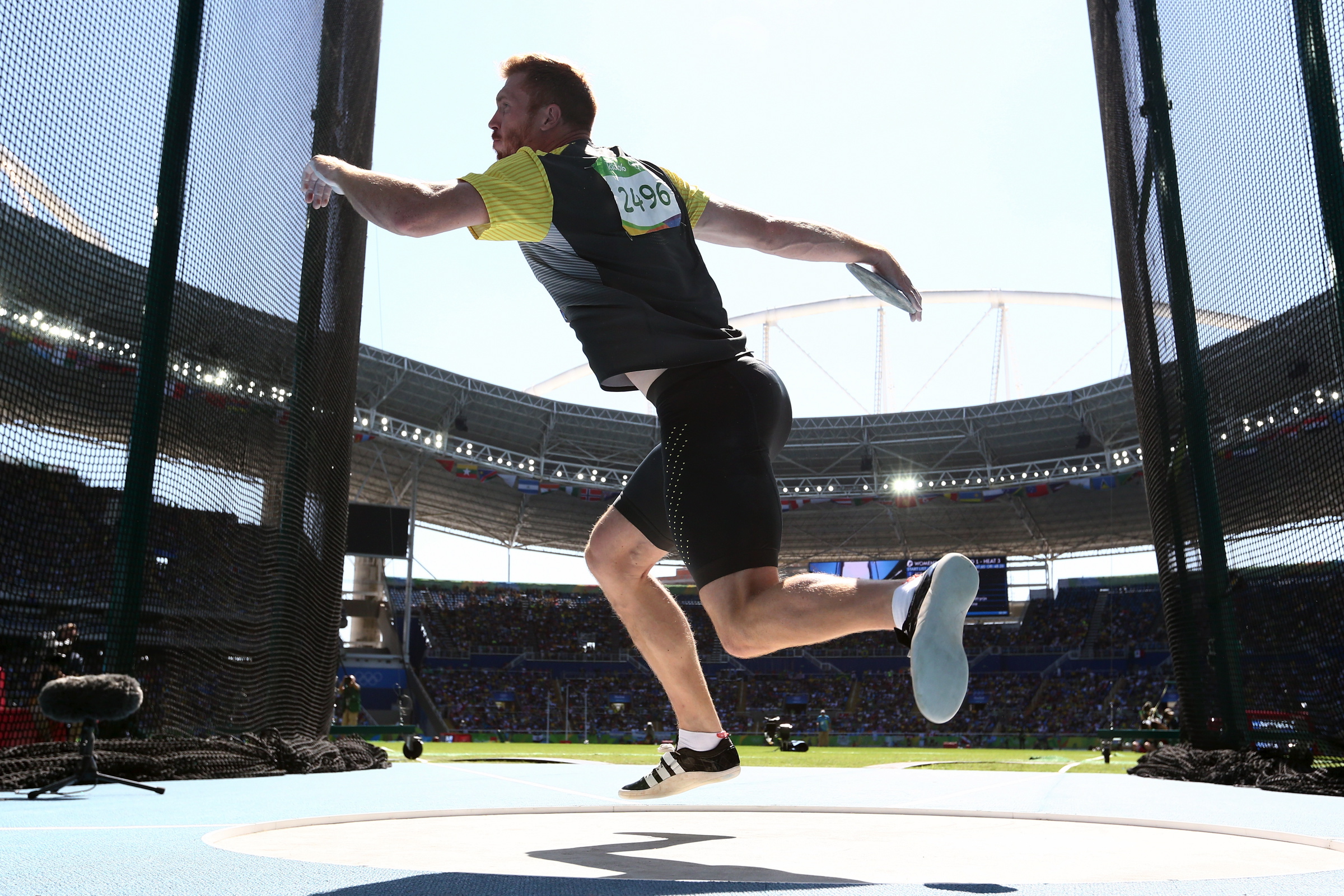

#Discus olympics full
However, in qualifying, wrapped with ice packs and tape and full of Novocain, he broke his Olympic record.

Oerter seemingly wasn’t at his best as he had a long term back disc injury and then a week before the Olympics, tore cartilage in his lower back and doctors advised six weeks rest. In 1962, Oerter became the first athlete to break the 200ft barrier (61 metres) with his first world record lasting only 17 days although he got it back a month later.īy the time of 1964, Ludvik Danek had advanced the world record to 64.54 and he went in to Tokyo, unbeaten in 45 competitions.

In the fifth round he came from behind to pass Babka with a PB 59.18m to up his Olympic record and beat his opponent by a metre. Oerter proved his competitive mettle though in Italy after initially struggling to hit his best form. The surprise winner was 20-year-old Al Oerter who improved his PB to 56.36m as world record-holder Fortune Gordien was second.īy the time of Rome in 1960, the new record-holder was giant Rink Babka, who had beaten Oerter in the US trials. USA had three in four in Finland but improved to a clean sweep in Melbourne in 1956. Italy came out on top for the only time in 1948 in London with Adolfo Consolini winning with a 52.78m from team-mate Giuseppe Tosi as the first three bettered the previous Olympic mark.Ĭonsolini improved to 53.78m in Helsinki in 1952 but was decisively beaten by the 55.03m from Simeon Iness. USA repeated a one-two in Berlin in 1936 with Kenneth Carpenter achieving the first Olympic throw over 50 metres with 50.48m. Unfortunately his throw was at a crucial moment of the pole vault and all the officials watched that rather than where his effort landed! He was given an extra one but still could do no better than fourth with all his throws. It was thought that Frenchman Jules Noel, who between the rounds swigged champagne, may have thrown further with his fourth attempt. John Anderson was fifth but he improved dramatically to win gold in Los Angeles in 1932 bettering the previous Olympic record with four of his six throws. He won with an Olympic record 46.15m, which he improved to 47.32m in Amsterdam in 1928 though he only narrowly defeated Finn Antero Kivi. In Paris in 1924, USA were back on top again as shot champion Bud Houser completed a double that no male thrower has repeated since. Another Finn Elmer Niklander finished fourth and eight years later, following the First World War he won gold in 44.68m not far ahead of Taipale.


 0 kommentar(er)
0 kommentar(er)
